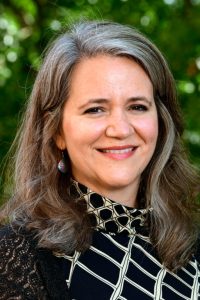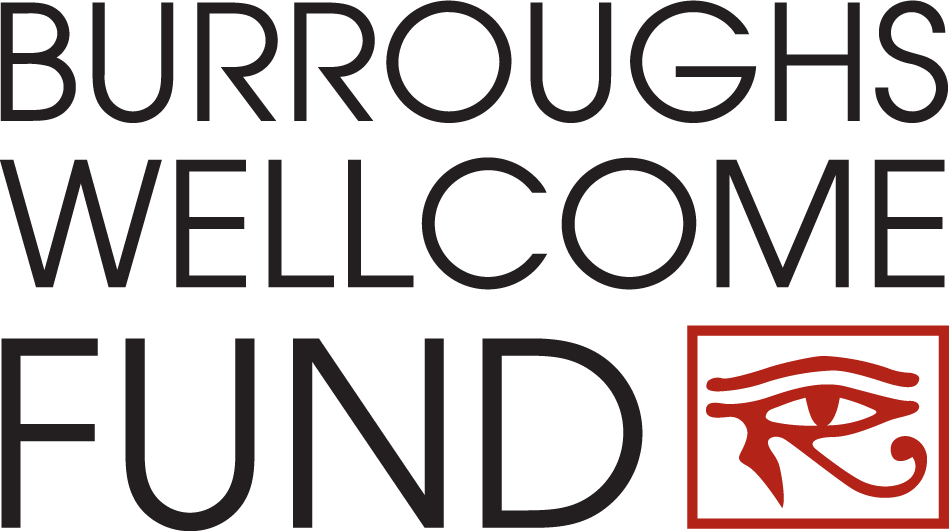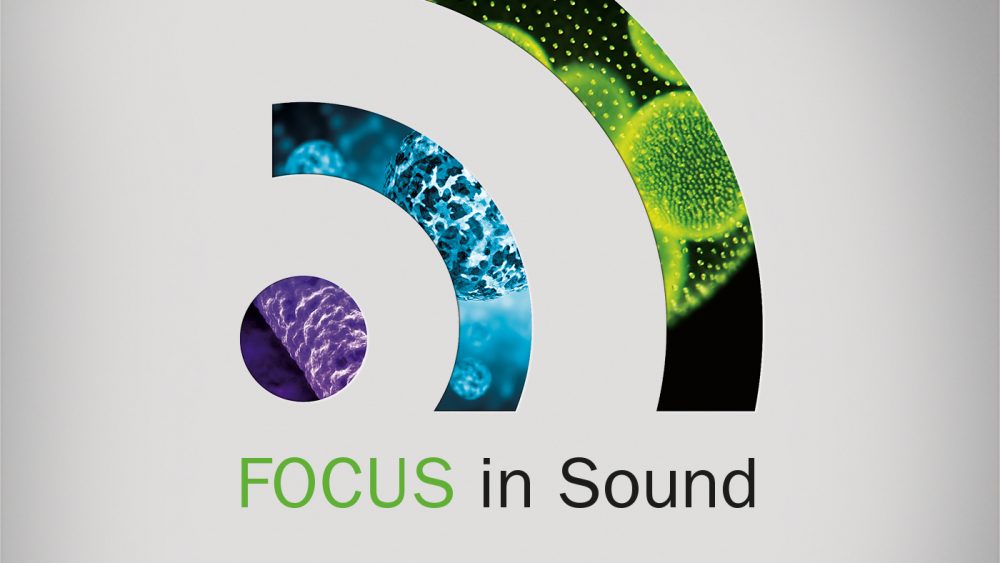Welcome to FOCUS In Sound, the podcast series from the FOCUS newsletter published by the Burroughs Wellcome Fund. I’m your host, science writer Ernie Hood.

In this edition of FOCUS In Sound, we meet one of the newest members of the Burroughs Wellcome Fund family, Program Officer Dr. Tammy Collins, who joined the Fund in October 2022. Tammy leads the Fund’s efforts in interdisciplinary science, including the Career Awards at the Scientific Interface and the Innovation in Regulatory Science Awards, which we will focus on for this edition of Focus in Sound.
Tammy spent the past decade at the National Institute of Environmental Health Sciences as its director of the NIEHS Office of Fellows’ Career Development. She received her B.S. in Chemistry from Appalachian State University and her Ph.D. in Biochemistry from Duke University. After a brief postdoc at Duke, she joined NIEHS in 2009, where she developed her passion for working in the scientific career development field.
Tammy Collins, welcome to the Fund, and to FOCUS In Sound …
TAMMY: Thanks, I’m glad to be here.
ERNIE: After so many years in government service mentoring fellows in their career development, what led you to shift your own career development path to the philanthropic sector by joining the Fund?
TAMMY: Well, I’m glad that you asked that. So actually, part of my previous role included mentoring fellows on how to apply for grants, including the K99-R00. So I was really excited when I learned about this opportunity at Burroughs Wellcome Fund, where I was still going to get the chance to mentor individuals through the grant process. Specifically, postdocs, with one of the other programs that I oversee, and then faculty. So I’ll be able to learn new skills in mentoring faculty with the Innovations in Regulatory Science program. And in terms of moving from government service to the philanthropic sector, I still see that I am working in the service sector and still providing a service, just in a different avenue. And I’m really excited about being able to have a broad impact in science as it relates to a wide variety of areas, both with the Career Awards at the Scientific Interface as well as the Innovations in Regulatory Science. So I’m excited about those aspects of my work at Burroughs Wellcome Fund.
ERNIE: So you didn’t even have to relocate, did you?
TAMMY: I didn’t, and actually NIEHS is less than four miles down the road from Burroughs Wellcome Fund, on the same road. So I’m still here in Research Triangle Park.
ERNIE: Well Tammy, to get us started on our discussion about regulatory science, would you give us a definition of the field, and tell us why the Fund invests in the sector?
TAMMY: Yeah. That’s a question I have gotten a lot of times. People asking, “What is regulatory science?” So regulatory science has actually been defined as the science of developing new tools, standards, and approaches to assess the safety, efficacy, quality, and performance of FDA-regulated products. And Burroughs Wellcome Fund recognizes that regulatory science is a very important field, and it’s often an underserved area of research in the biomedical enterprise. And oftentimes what’s seen is that in translating or moving scientific discoveries into actual interventions that are going to help patients or therapeutic interventions, the regulatory science aspect is often what results in a bottleneck. And so what we want to do is actually help to close the innovation gap in creating new evaluative tools for new emerging technologies, and to do that in a wide variety of areas. We call out some of them in the RFP, but some of the things we’re looking at are specifically in gene therapy, artificial intelligence and machine learning, digital health, model-informed product development, and new technologies that might help to reduce animal testing. So these are just calling out a few areas, but really the field is wide open in terms of any individual that’s going to be helping to advance the field of regulatory science.
ERNIE: Let’s look at the Innovation in Regulatory Science Awards, or IRSA. The awards program is going into its tenth year in 2023. Would you give us a brief overview of the IRSA program?
TAMMY: The IRSA program, or the Innovation in Regulatory Science Awards, it supports faculty over a period of five years, and the total award amount is for $500,000. And one of the key things is that we want to support researchers who are developing innovative solutions to solve regulatory questions. And another thing that’s key is we want these solutions to actually be implementable. So when individuals are applying for the IRSA program, we would like for them to address how they expect their solutions are going to expedite the regulatory decision-making process.
ERNIE: What types of researchers has it attracted in its existence?
TAMMY: IRSA has attracted a wide variety of researchers from many different fields and backgrounds. When I was looking back on this, I see we’ve supported toxicologists, biostatisticians, public health scientists, even organic polymer chemists and engineers. And we really anticipate that interdisciplinary work that’s being conducted at the interface of even fields such as physics, computer science, and engineering are going to go a long way towards helping to develop those new tools and approaches that are going to be aiding regulatory decisions. And we’re actually now in the process of systematically evaluating the fields of study of all of our past awardees over the past ten years, which is how long the program has been in existence, and we aim to include this in a publication as part of the overall program evaluation.
ERNIE: So what kind of impact do you think the IRSA program has had on the regulatory science field?
TAMMY: That’s a great question, and that is actually precisely one of the questions I had when I came here to Burroughs Wellcome Fund, and I’m actually working now with a team to set out on a project that I just alluded to before where we’re evaluating IRSA ten years later. And one of the things we want to look at are what actual new tools and methods were created with IRSA support. We’re curious about what are some of the FDA-focused areas of regulatory science that individuals have been addressing. We would like to see also if they were addressing an aspect of clinical trial development — what phase of the clinical trials process? And can we actually point to specific cases where regulatory decisions are expedited, and if so, by how much? So these are the types of questions that we want to be answering in this in-depth analysis that we’re going to be conducting over the coming year. We also have a lot of questions about to what extent the Burroughs Wellcome Fund IRSA program has helped to foster interdisciplinary collaborations and helped build a network of scientists, because that was one of the goals at the outset. Another goal at the outset was to move the needle on scientists choosing regulatory science as an actual career path. So these are some of the types of things that we are going to be looking at when we evaluate its impact.
ERNIE: So why would it be advantageous for a scientist to apply for this award?
TAMMY: Well beyond the most obvious reason for obtaining $500,000 over five years, really at Burroughs Wellcome Fund we seek to foster a network of our awardees, and not just IRSA awardees, but a network of awardees across all of the different programs. Each year we have a new awardee networking meeting, and we think that’s really important for helping to build connections and leading to additional collaborations and research that we have seen come out of that over the years. Also, Burroughs Wellcome Fund funding is flexible, as the funding is coming from the philanthropic sector. So I think those are some of the additional advantages of applying and receiving an IRSA award.
ERNIE: So Tammy, what should an interested researcher do to start the application process, and how can potential applicants find out about all of the details?
TAMMY: So I would suggest to review bwfund.org, our website, and look at the program on Regulatory Science, and we give lots of details. You can find our request for proposals there, as well as all of the deadline information. We have a section on Frequently Asked Questions, and I highly encourage individuals to reach out to myself as well, at tcollins@bwfund.org if you have questions about what your project is and whether it fits in line with the scope of the IRSA program. So really, that’s what we’re here for, so feel free to reach out anytime with any questions.
ERNIE: That’s great to hear, thank you. Well Tammy, I know we want to point out at this point that interested folks should also be sure to watch the video we’ve posted accompanying this podcast, where you engage with three current IRSA awardees to get an in-depth look at their experiences with the program…
TAMMY: Yeah, I know, I’m really excited about the opportunity that we had to engage with some of our past IRSA awardees, and learn more about *** [what] the work that they’ve done and where it has taken them and how this has advanced their career, so please make sure to check that out, because it was a great conversation.
ERNIE: Well Tammy, this has been a great conversation too! Thank you so much for joining us on FOCUS In Sound.
TAMMY: Thanks for having me. It was really great speaking with you today.
ERNIE: We hope you’ve enjoyed the program, and will join us again next time. This is Ernie Hood. Thanks for listening!


Comments are closed.